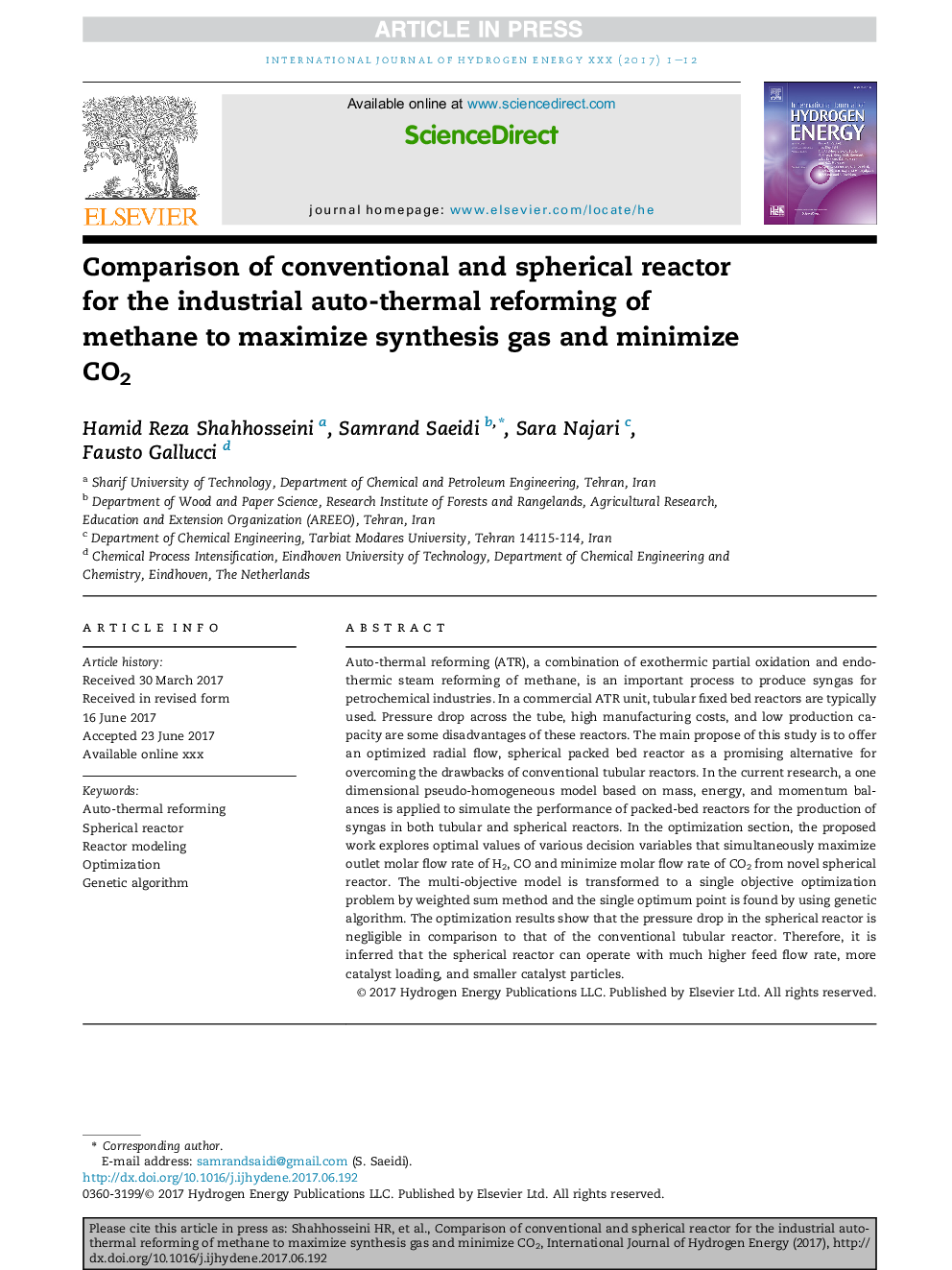| Article ID | Journal | Published Year | Pages | File Type |
|---|---|---|---|---|
| 5146616 | International Journal of Hydrogen Energy | 2017 | 12 Pages |
Abstract
Auto-thermal reforming (ATR), a combination of exothermic partial oxidation and endothermic steam reforming of methane, is an important process to produce syngas for petrochemical industries. In a commercial ATR unit, tubular fixed bed reactors are typically used. Pressure drop across the tube, high manufacturing costs, and low production capacity are some disadvantages of these reactors. The main propose of this study is to offer an optimized radial flow, spherical packed bed reactor as a promising alternative for overcoming the drawbacks of conventional tubular reactors. In the current research, a one dimensional pseudo-homogeneous model based on mass, energy, and momentum balances is applied to simulate the performance of packed-bed reactors for the production of syngas in both tubular and spherical reactors. In the optimization section, the proposed work explores optimal values of various decision variables that simultaneously maximize outlet molar flow rate of H2, CO and minimize molar flow rate of CO2 from novel spherical reactor. The multi-objective model is transformed to a single objective optimization problem by weighted sum method and the single optimum point is found by using genetic algorithm. The optimization results show that the pressure drop in the spherical reactor is negligible in comparison to that of the conventional tubular reactor. Therefore, it is inferred that the spherical reactor can operate with much higher feed flow rate, more catalyst loading, and smaller catalyst particles.
Related Topics
Physical Sciences and Engineering
Chemistry
Electrochemistry
Authors
Hamid Reza Shahhosseini, Samrand Saeidi, Sara Najari, Fausto Gallucci,
